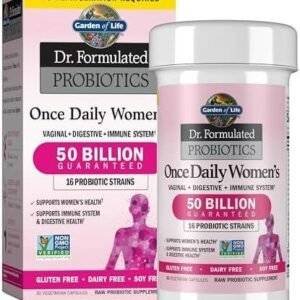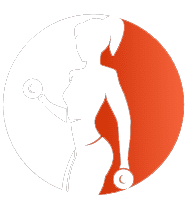In a world where vitality is often equated with speed and efficiency, the humble mineral iron stands as a silent yet powerful ally in our quest for optimal health and unwavering energy. Often relegated to the sidelines in discussions about nutrition and wellness, iron is a cornerstone element that underpins a multitude of bodily functions, from the transport of oxygen in our bloodstream to the creation of essential enzymes. Yet, despite its significance, the complexities of iron—its sources, types, and effects on our well-being—are frequently overshadowed by flashier nutrients.
In this exploration of “Iron Uncovered,” we delve into the dual role of this essential mineral as both a vital energy booster and a health enhancer. We will unravel the science behind iron’s impact on our bodies, uncovering how it fuels our daily performance and safeguards our longevity. From understanding the balance between deficiency and excess to discovering dietary sources that champion our well-being, this article aims to illuminate the critical role of iron in fostering a vibrant, energetic life. Join us as we embark on a journey to uncover the often-overlooked benefits of iron, celebrating its indispensable contributions to our health and vitality.
Table of Contents
- The Vital Role of Iron in Energy Production
- Unlocking Iron’s Benefits for Optimal Health
- Iron-Rich Foods: Boosting Your Diet for Better Well-being
- Overcoming Iron Deficiency: Strategies for a Healthier You
- To Conclude
The Vital Role of Iron in Energy Production
Iron is an essential mineral that serves as a fundamental pillar in the body’s energy production processes. It participates primarily in the formation of hemoglobin, the protein responsible for transporting oxygen in the blood. Adequate levels of iron ensure that oxygen reaches vital organs and tissues, directly influencing our energy levels. Without sufficient iron, the body’s ability to produce adenosine triphosphate (ATP), the energy currency of cells, diminishes significantly, leading to fatigue and weakness.
Moreover, iron plays a pivotal role in several enzymatic reactions involved in metabolic pathways. Key functions include:
- Enhancing mitochondrial function: Iron-containing enzymes facilitate the conversion of nutrients into energy within the mitochondria.
- Supporting cellular respiration: It aids in the electron transport chain, which is crucial for energy production in aerobic organisms.
- Promoting muscle efficiency: Adequate iron levels are vital for optimal muscle function and performance during physical activities.
To highlight the importance of maintaining healthy iron levels, the table below presents common food sources of iron along with their approximate iron content.
| Food Source | Iron Content (mg per 100g) |
|---|---|
| Red Meat | 2.6 |
| Spinach | 2.7 |
| Legumes (lentils) | 3.3 |
| Tofu | 5.4 |
| Quinoa | 1.5 |
Unlocking Iron’s Benefits for Optimal Health
Iron plays a crucial role in maintaining optimal health, serving as the backbone of numerous physiological processes. This essential mineral is fundamental for the formation of hemoglobin, the protein in red blood cells that carries oxygen throughout the body. Without adequate iron levels, individuals may experience fatigue, weakness, and diminished cognitive function. To harness the power of iron, consider incorporating the following iron-rich foods into your diet:
- Red meat: An excellent source that provides heme iron, which is more easily absorbed by the body.
- Legumes: Beans, lentils, and peas are rich in non-heme iron and also high in fiber.
- Leafy greens: Spinach and kale are great plant-based options that supply iron along with essential vitamins and minerals.
- Nuts and seeds: Almonds, pumpkin seeds, and cashews are not only nutritious but also contribute significant iron content.
Moreover, enhancing iron absorption involves a strategic approach to accompanying foods and nutrients. Pairing iron sources with vitamin C-rich foods can significantly boost intestinal iron uptake, making it vital to include items such as oranges, bell peppers, or strawberries in your meals. Understanding the synergy between iron and other nutrients is equally important. Consider this simple table that illustrates some foods to eat together for optimal iron absorption:
| Iron Source | Complementary Food |
|---|---|
| Spinach Salad | Mandarin Orange Segments |
| Legume Stew | Tomato Chutney |
| Beef Stir-Fry | Bell Peppers |
| Quinoa Bowl | Fresh Lime Juice |
Iron-Rich Foods: Boosting Your Diet for Better Well-being
To fortify your diet and revitalize your well-being, incorporating an array of iron-rich foods is essential. Iron is not only crucial for producing hemoglobin, which transports oxygen throughout the body, but it also plays a significant role in energy production and immune function. A well-balanced intake helps combat fatigue and keeps your vitality levels high. Consider adding the following sources of iron to your meals:
- Red Meat – Beef and lamb are excellent sources of heme iron, easily absorbed by the body.
- Poultry – Chicken and turkey provide a healthy dose of iron while being a lean protein option.
- Seafood – Shellfish like oysters, clams, and sardines are not just delicious but also teeming with iron.
- Legumes – Beans, lentils, and chickpeas serve as great plant-based iron sources, packed with fiber and protein.
- Leafy Greens – Spinach, kale, and Swiss chard are rich in non-heme iron, especially beneficial when paired with vitamin C-rich foods.
Balancing iron intake with foods that enhance its absorption is equally important. Vitamin C is a powerful ally, helping to increase non-heme iron absorption. Foods like oranges, strawberries, and bell peppers can be paired with iron sources to maximize their benefits. Below is a concise table showcasing some iron-rich foods, their iron content, and complementary vitamin C sources:
| Food | Iron Content (mg per 100g) | Vitamin C Companion |
|---|---|---|
| Spinach | 2.7 | Strawberries |
| Lentils | 3.3 | Bell Peppers |
| Beef | 2.6 | Oranges |
| Chickpeas | 2.9 | Kiwi |
| Oysters | 7.0 | Broccoli |
Overcoming Iron Deficiency: Strategies for a Healthier You
Iron deficiency can sap your energy, but with the right strategies, reclaiming your vitality is entirely achievable. Start by incorporating iron-rich foods into your diet. These include:
- Red meats – a major source of heme iron, easily absorbed by the body
- Poultry – such as turkey and chicken, offers a good alternative
- Leafy greens – spinach and kale provide non-heme iron, especially when paired with vitamin C rich foods
- Legumes – lentils, chickpeas, and beans are powerhouses of plant-based iron
- Nuts and seeds – snack on almonds or pumpkin seeds for a boost
Beyond dietary adjustments, consider incorporating supplements if necessary. Iron supplements can be beneficial, but consult your healthcare provider to avoid overdose. Additionally, optimizing absorption is vital—pairing iron sources with sources of vitamin C, such as citrus fruits, can significantly enhance uptake. It’s also important to be mindful of substances that inhibit iron absorption, like calcium and tannins present in tea and coffee. Staying informed and proactive enables you to conquer iron deficiency and unlock a more energetic, healthier lifestyle.
To Conclude
the journey through the multifaceted world of iron has unveiled its pivotal role in not just energizing our bodies but also enhancing our overall health. As we’ve explored, iron is more than merely a mineral; it’s a cornerstone of vitality and wellbeing. From fueling the very essence of our cellular functions to bolstering our immune system and supporting cognitive functions, this often-overlooked nutrient stands as a testament to the intricate balance our bodies require.
As we continue to prioritize our health in an era where dietary choices abound, understanding the sources and benefits of iron becomes essential. Whether it’s through red meat, leafy greens, or fortified cereals, ensuring adequate iron intake is a simple yet powerful step toward improving our quality of life.
As we close this chapter on iron, let us carry forward the insights gained and empower ourselves with knowledge. With intentional dietary choices coupled with a proactive approach to health, we can unlock the full potential of iron and, in turn, of ourselves. Here’s to a future fueled by a deeper understanding of the nutrients that make our lives not just bearable but truly vibrant.




